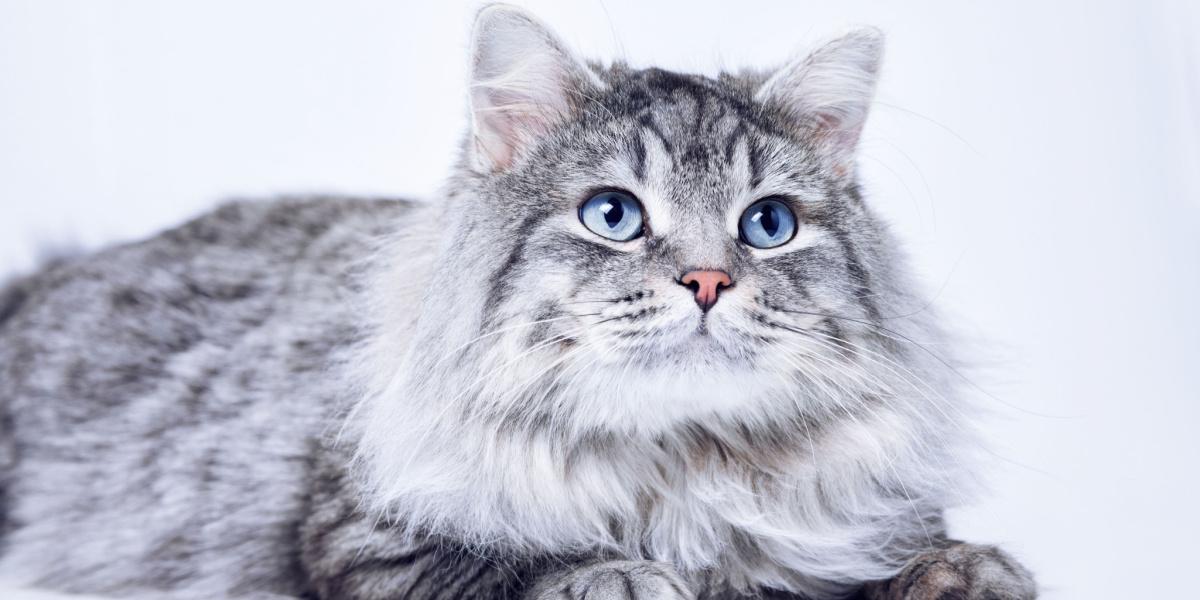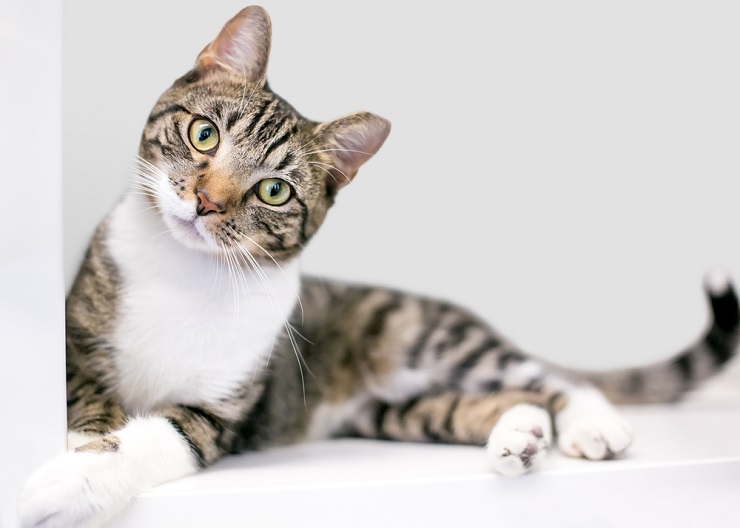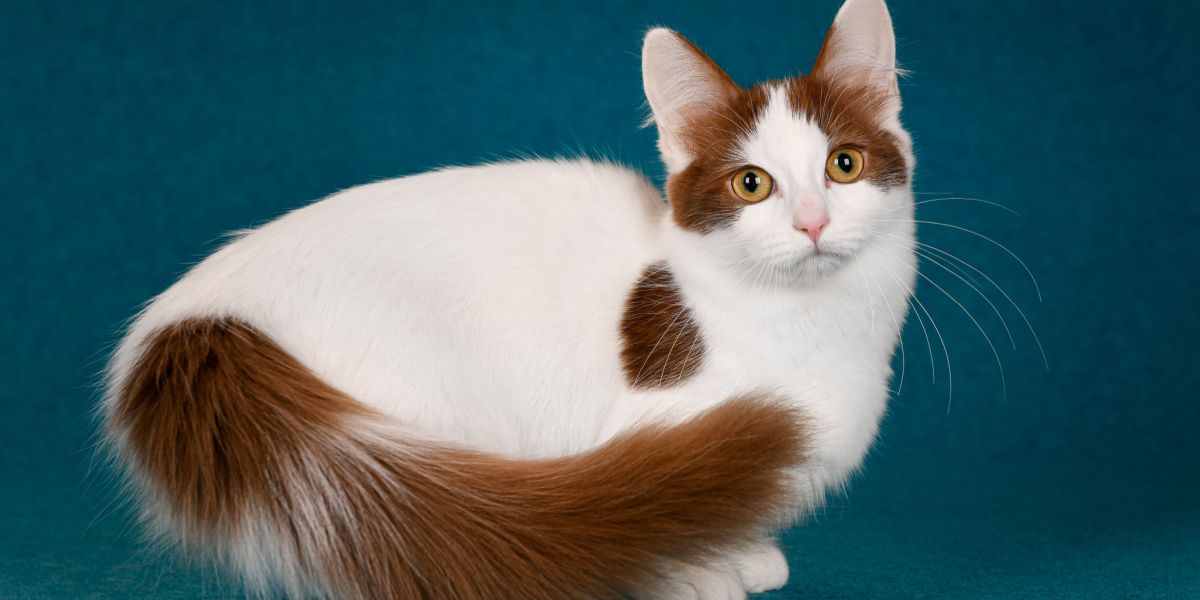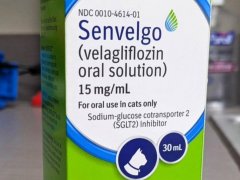
Felimazole is a common brand name for the generic medication methimazole. Felimazole for cats is commonly used in veterinary medicine by vets to treat cats with hyperthyroidism. In this article, you’ll learn what Felimazole is, how it works, side effects to monitor for, and some frequently asked questions.
Quick Overview: Felimazole for Cats

About Felimazole for Cats

Felimazole is used to manage hypothyroidism in cats.
Felimazole is classified as an antithyroid medication. Essentially, it inhibits the synthesis or production of thyroid hormone secreted by the thyroid glands.
Methimazole is a very common and valuable medication for use in treating cats with hyperthyroidism where the thyroid glands produce too much thyroid hormone (T4), leading to chronically debilitating effects on the body.
Felimazole is manufactured by Dechra Pharmaceuticals, and is FDA-approved for use in cats. A human brand called Tapazole is commonly used off-label in cats. There are also many generic forms of methimazole available.
Unlike other forms of methimazole, Felimazole is uniquely developed for cats in coated tablets in both 2.5 milligram and 5 milligram tablet size, which are the most common dosage increments used for cats. A light sugar coating to the tablets is also designed to improve palatability.
Also Read: Hyperthyroidism In Cats: Symptoms, Treatment & Causes
What Does Felimazole Do for Cats?

Hyperthyroidism occurs then a cat’s the glands produce too much T4 and T3 thyroid hormones.
Feline hyperthyroidism is a very common disease in older cats. It is considered the most common endocrine disease that affects older cats.
An endocrine disease is one that concerns glands within the body that produce hormones. In the case of hyperthyroidism in cats, the glands are producing too much T4 and T3 thyroid hormones.
The effect that too much thyroid hormone places on the body can vary from cat to cat but is generally widespread throughout the body. High thyroid levels increase metabolism, essentially putting a cat’s body on overdrive.
Classically hyperthyroid cats are usually at least 10 years of age or older, and develop a ravenous appetite coupled with weight loss.
Hyperthyroidism in cats is most often caused by a benign tumor of the thyroid glands called an adenoma. Truly cancerous malignant tumors of the thyroid gland are fortunately considered very rare in cats, making medical management very feasible.
Felimazole for cats blocks the synthesis and release of thyroid hormone from the thyroid gland, thereby controlling the overproduction and effects of the disease. In this way however, methimazole is a medication that can only manage, but not cure, hyperthyroidism. A good way to think about it is that Felimazole significantly slows down hyperthyroidism, bringing it to a grinding halt, but does not stop it.
Also Read: Best Cat Food For Hyperthyroidism
Side Effects of Felimazole for Cats

The most common side effects of Felimazole include vomiting, a poor appetite, and lethargy.
Many cats tolerate Felimazole well, but there are some more common and uncommon adverse effects to be aware of, which most often occur within the first three months of methimazole use. The most common include vomiting, a poor appetite, and excessive tiredness/lethargy. According to the manufacturer, these signs plus abnormal vocalizing and skin lesions were the most commonly seen in a study of over 100 cats.
In another long-term field study, the above signs were seen in addition to side effects including depression, weight loss, hair coat abnormalities, weakness, and agitation. Most of these side effects were reported by the manufacturer to be mild and transient.
While the manufacturer does also describe some mild changes in lab work, including mild decreases in red and white cell counts, these were still found to be within or near normal range. Other more serious blood disorders generally occur in only about 4% of cats.
Also Read: Anemia In Cats: Causes, Symptoms, & Treatment
Intense facial itching, termed pruritus, may occur in 2 to 3% of cats, and is often seen more quickly, within the first three weeks of treatment.
Other rare but serious effects can include liver disease and an immune-mediated disorder, both of which occur in less than 2% of cases. Even more rarely, a neuromuscular disorder called myasthenia gravis has been seen.
Because older cats are more often affected by hyperthyroidism, other diseases might sometimes already be present that can complicate treatment. The most common is kidney/renal disease.
When hyperthyroidism is present, it drastically increases the filtration rate in the kidneys, which can mask underlying kidney dysfunction. This evidence of renal function concerns may only be noted after starting the medication, as the filtration rate has slowed down. This is one primary reason that lab work rechecks are commonly needed to monitor organ function.
Methimazole might cause complications in cats with other disorders that might be present, including diabetes mellitus, liver disease, or any pre-existing blood-related disorders or disorders of the immune system.
Several types of medications might interact with methimazole. It’s very important to make your veterinarian aware of any other medications or supplements your cat is currently taking when discussing use of methimazole.
The maximum recommended daily dosage for Felimazole according to the manufacturer is 20 milligrams per day, with that dose divided. Overdoses of methimazole are most likely to temporarily induce the most common adverse effects, like GI upset and lethargy. According to the manufacturer, doses at 20 milligrams per day could lead to side effects including facial excoriation, itching, and lymph node swelling. Red and white cell count abnormalities were also more profound.
At 30 milligrams per day, which exceeds the recommended maximum dosage, cats experienced more profound side effects, including significant bloodwork changes, lymph node swelling, signs of inflammation throughout the body, and anorexia.
If you are ever concerned that your cat might have developed side effects while using methimazole, or if you think an overdose may have occurred, make sure to contact your veterinarian, the ASPCA Animal Poison Control Center (1-888-426-4435), or Pet Poison Helpline (1-855-764-7661) for further advice.
In humans, methimazole is considered a teratogen, meaning that it can cause birth defects in a developing fetus. Pregnant women or women who might become pregnant, should wear gloves when handling methimazole, as well as the cat’s litter or any bodily fluids (i.e. urine or vomit) from treated cats, or avoid contact altogether. Any person handling methimazole tablets should wash hands after administering it, as a precaution.
In cats that do develop digestive upset side effects from methimazole, changing to the topical transdermal form might be an option, as stomach irritation by the tablet is bypassed. In cats that develop any of the more serious side effects where methimazole needs to be discontinued, other treatment modalities for hyperthyroidism, like iodine-131, surgery, or a prescription diet, would be needed to manage the disease.
Also Read: Drug Poisoning In Cats: Causes, Symptoms, & Treatment
Methimazole for Cats Dosage

Your veterinarian will monitor your cat’s blood to determine the appropriate dose of Felimazole.
Per the label for Felimazole for cats, which is FDA-approved, the starting dose for methimazole is 2.5 milligrams every 12 hours. The dose is then titrated/adjusted depending on recheck lab work after three weeks. The dose should only be adjusted in 2.5 milligram increments. Felimazole tablets should not be split or crushed.
The maximum total dose of Felimazole is 20 milligrams per day divided in two 12-hour doses of not more than 10 milligrams each.
According to the manufacturer, a majority of cats had their disease controlled with 2.5 milligrams every 12 hours. However, some cats were controlled at 2.5 milligrams just once a day while others required doses of up to 15 milligrams per day, highlighting the importance of bloodwork monitoring rechecks.
In cats that don’t tolerate use of Felimazole’s tablet form, either because of digestive upset effects, or an owner having difficulty at home giving a tablet to their cat, oral liquid and topical transdermal preparations can be formulated through compounding pharmacies. The manufacturer Dechra has a pet owner’s brochure on their website that contains helpful administration tips.
For pet parents considering one of the more curative methods for hyperthyroidism, like surgical removal of the overactive gland or iodine-131 treatment, a short-course of methimazole is still often prescribed to both get symptoms under control until the procedure, as well as to ensure control is possible and that secondary kidney disease does not develop after thyroid function returns more to normal.
Also Read: What’s The Best Food For Cats With Kidney Disease?
Felimazole for Cats: In Summary

Methimazole is the most common medication for of managing hyperthyroidism in cats.
Felimazole is the only brand of methimazole FDA-approved for cats. Its benefits are that it works within only a couple of weeks to control signs of hyperthyroidism, and it is relatively inexpensive. The sugar-coated Felimazole tablets might be more palatable than generic forms.
Side effects are generally less frequent at common doses, but are well-documented and possible, especially at higher doses. However, since other treatment methods might be less reliable (prescription diet) or prohibitively expensive (surgery and iodine-131 treatment), methimazole still remains the go-to medication for management of this common condition.
Drug Dosing Disclaimer: We are only able to provide doses for medications that are FDA approved for use in cats and only as the label guidelines dictate. For medications that are used off-label we can only provide guidelines and safety information for use. Safe and appropriate dosing for off-label medications can only be determined by a primary care veterinarian.
We encourage you to work with your veterinarian to determine if a particular medication is appropriate for your cat. Changing or adjusting a dose for your cat on your own without consulting with a veterinarian can carry risk. We do not encourage use of medications prescribed for human use in pets without first consulting with a primary care veterinarian.
Frequently Asked Questions
What does Felimazole do for cats?
Felimazole is a brand name for methimazole, which is a medication used to manage hyperthyroidism in cats. Methimazole is not a cure for hyperthyroidism but significantly slows down the disease. In most cases, methimazole can be effective at managing hyperthyroidism for at least a couple of years.
How long can a cat take Felimazole?
This will vary in each cat. There is a small percentage of cats that will have adverse reactions to it at even starting doses, preventing them from being on it for very long.
In cats that tolerate Felimazole well at early therapeutic doses, it might be possible to see adverse effects if much higher doses are eventually needed to control the disease.
Even when treated with Felimazole, hyperthyroidism will still slowly progress, sometimes requiring medication dose increases periodically.
Felimazole can be used for the entire life of a cat with hyperthyroidism as long as significant side effects affecting quality of life do not develop. If these types of concerns arise, an alternate method to address hyperthyroidism, namely I-131 treatment or surgical removal of the overactive thyroid gland, should be considered.
What is the life expectancy of a cat with hyperthyroidism?
First, this might depend a lot on the age of the cat at the time of diagnosis. Average age at diagnosis has been reported at anywhere from 12 to 14 years of age. Most cats are at least 10, but the author has seen a cat as young as 9 develop the disease.
The second thing that affects life expectancy is any concurrent diseases, especially diseases like kidney disease, primary heart disease, or diabetes. The presence of secondary diseases like these has confounded life expectancy studies in many cats, which do not die from hyperthyroidism but succumb to another process after their hyperthyroid diagnosis.
Keeping those details in mind, there is some data available about life expectancy. A study published in 2022 in Macedonian Veterinary Review that followed cats diagnosed with hyperthyroidism at a hospital in London found that the median survival time for cats receiving methimazole was about 24 months (median survival time is not the average, but means that half of cats lived one year less and half lived one year longer).
Other studies have found that when I-131 treatment is pursued that survival rates are typically longer, pushing three to four years. All studies have found that cats with concurrent renal disease have significantly shorter life expectancies with many seeing a median survival of only about six months.
There is also evidence that general domestic shorthair cats might have a longer life expectancy after diagnosis than some purebred cat breeds.
Can you crush Felimazole for cats?
According to the manufacturer, you should not crush tablets of Felimazole. The tablets should also not be split. Because Felimazole brand tablets are coated and are not scored tablets, splitting or crushing them will not guarantee proper dosage and absorption of the medication. For Felimazole specifically, any dosage change should be adjusted using the 2.5 milligram tablet size, up until the point that 5 milligram tablet sizes are needed.
Generic methimazole tablets that are scored and are not coated can be split with an equal dosage expected on either side of the score mark.








I hàd a gorgeous black cat w/ this dißeas3. I 3uthanized her aftwe problems w/ felimaZole, severe intolerance and wt loss.and advancing lidney diswase. Gosh i loved her. I deeply wished thete a coat effective cure.
Hi Patricia, I’m sorry to hear about your kitty. While rare (I have only seen it maybe twice myself), there are cats that cannot tolerate methimazole at all and have a very bad reaction to it, especially with their liver. Stopping the medication usually helps to reverse that, but then the hyperthyroidism isn’t being treated. That really only leaves the Hill’s y/d diet and I-131 as treatment options. I-131 does provide a cure for hyperthyroidism in a majority of cases, but it is very expensive comparatively and you have to be certain the cat has no other underlying illnesses. I don’t know about the case for your kitty, but I did also once have a cat with both hyperthyroidism and a separate liver/gall bladder disease disorder. We were able to manage the hyperthyroidism but the liver disorder was very hard to treat without very advanced therapies.